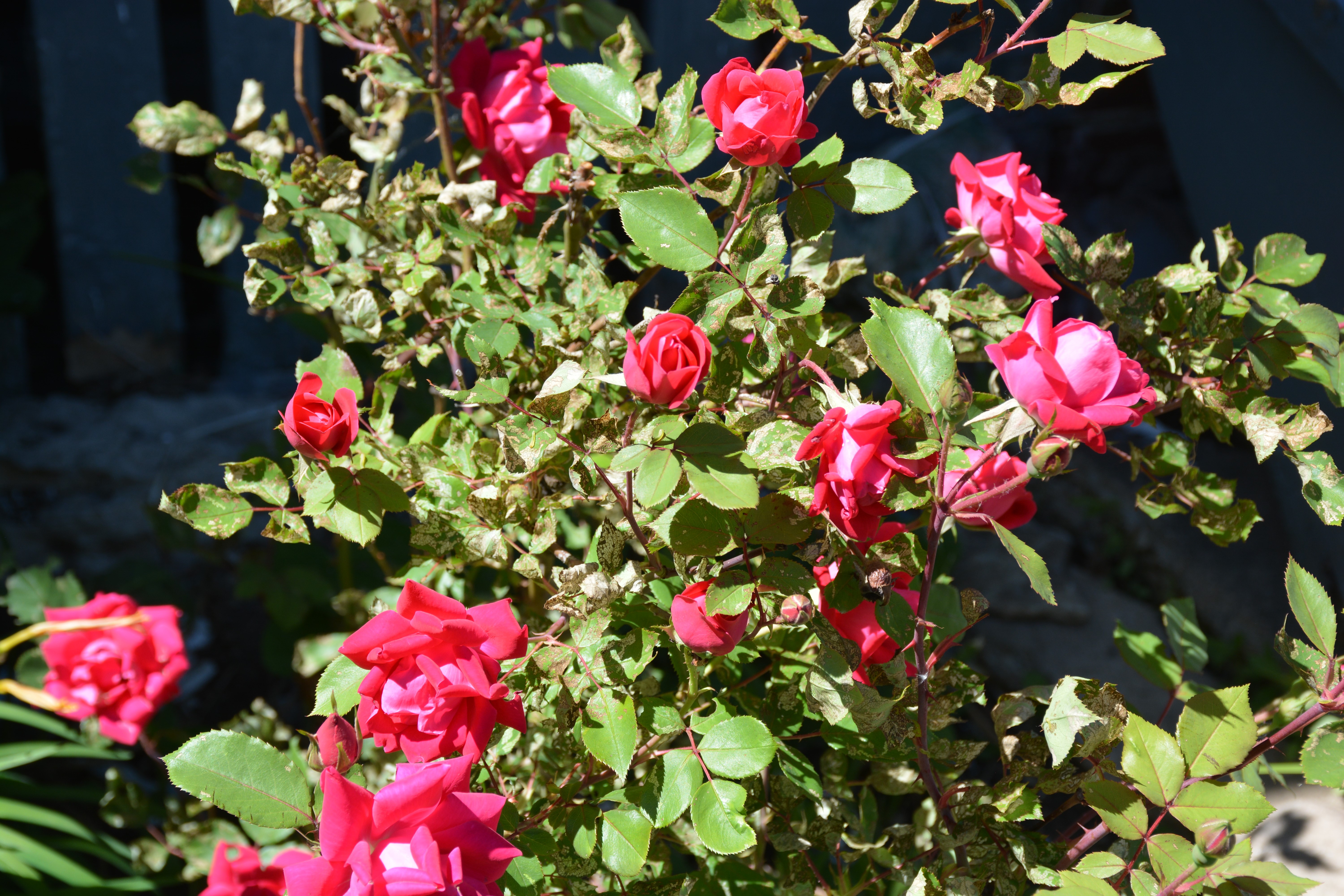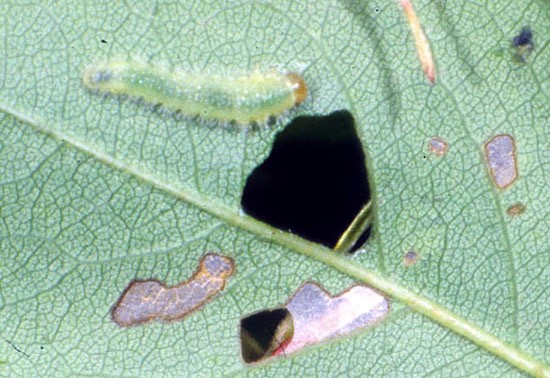Issue 4, June 1, 2021
Rose Slugs
In the past week, I observed numerous rose plants with rose slug injury. Phil Nixon originally published the following article on April 30, 2010. –Travis Cleveland

Photo 1 Rose slug injury. Travis Cleveland, University of Illinois
We've had several reports of bristly rose slug causing rose foliage to be lacelike. The green larvae are more numerous on the undersides of the leaflets. Although causing window-feeding when young, the larger larvae eat holes in the leaflets and even cause defoliation.
The bristly rose slug is green, with fine, hairlike spines, and grows to about 1/2 inch long. Rose slug looks like bird manure when young but when older looks like the bristly rose slug without the bristles. Both are present at this time of year.

Photo 2 Bristly rose slug
Remove small infestations by hand. Although these insects look superficially like slugs or caterpillars they are sawfly larvae. They will not be controlled with slug baits or Bacillus thuringiensis kurstaki. Acephate (Orthene), bifenthrin (Talstar), carbaryl (Sevin), and cyfluthrin (Tempo) are effective. Insecticidal soap will also be effective with very good coverage. Avoid getting the insecticide on flowers, although most rose varieties have had the nectar and pollen bred out of them and are not attractive to pollinating insects. Species roses and particularly some single-flowered varieties will attract pollinators, which could be killed by insecticide sprays on the blooms. Because carbaryl is more likely to cause bee kills, avoid spraying Sevin on blooming rose bushes being visited by pollinators
Author:
Phil Nixon